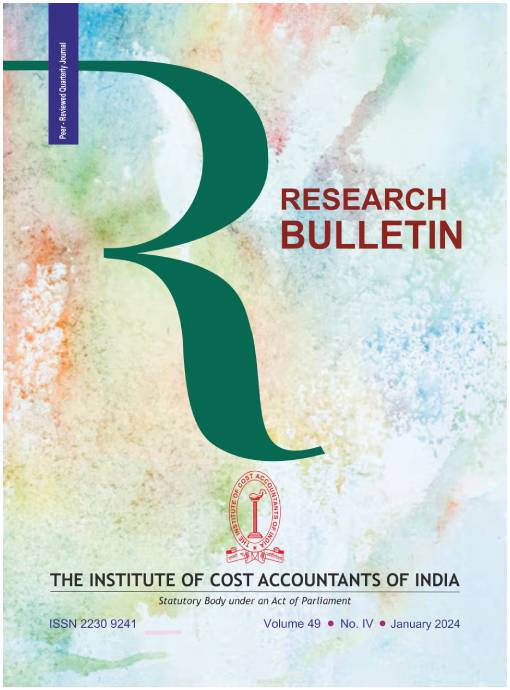Return on Talent: The Underpinned Aspect of Innovation
DOI:
https://doi.org/10.33516/maj.v48i3.277-282pAbstract
No Abstract.Downloads
Downloads
Published
How to Cite
Issue
Section
References
Thrusters and Sleepers-A PEP Study, George Allen & Unwin, London, 1965.
Jeffrey Pfeffer, The Human Equation: Making Profits by Putting People First, Harvard Business School Press,1998.
Cf. Subir Chowdhury, Management in the 21Century, Pearson Publications Ltd., Edinburgh, 2000, p.2. This book is a collection of essays of some of the major thought-leaders in the area of organization and management, seeking to indicate the shape of things to come in the present century. This book also provides critical insights into what the manager in the 21st century would be up against. The highly readable book emphasizes that people in the organization would occupy the centre stage and people management in the organization would be the major concern, especially the overt and covert talents that they have, which would call for conscious cultivation and nurturing.
Peter F. Drucker, Managing for Results, Pan Books, London, 1967. There is a separate chapter in the book with the heading, 'Making the Future Today' that discusses how important it is to look into the future rather than exulting over the current achievements. Decision making is basically a futuristic exercise and in this, the groping continues because of the risks and uncertainties that envelop a manager's predictive calculations. See also his other book entitled, Managing in a Time of Great Change, Penguin Group, New York,1985 which deals with the externalities in the main.
Marvin Bower, The Will to Lead: Running a Business with a Network of Leaders, Harvard Business School Press, 1997.
Rensis Likert, New Patterns of Management, McGraw-Hill Book Company, New York, 1961 and Human Organization: Its Management and Value, McGraw-Hill Book Company, New York, 1967. Professor Likert in his masterly exposition on managerial types and systems, explains his 'System 4 management as the most participative, managers having complete trust and confidence in subordinates in all matters, always get ideas and opinions from subordinates and constructively use them, give economic rewards on the basis of group participation and involvement in such areas as setting goals and appraising progress toward goals, engage in much communication down and up and with peers, encourage decision making throughout the organization, and otherwise operate with themselves and their subordinates as a group.' In his scheme of things, teamwork provides the key, in so far as leadership of a team may even pop up from the bottom rung people having had previous experience, expertise and vision for accomplishing a task. After all, it is the proverbial wearer who knows where the shoe pinches.
In fact it was Professor Rensis Likert who ideated on putting values to human assets in the organizations. He called them human assets and presented a format for human asset accounting. His efforts were a precursor to the later developments on human resource accounting. While Professor Likert's ideas did not attract wide and continuing attention, considerable merits may be traced in his ideas especially the organizational profiles that he presented in the above books. His orientation was, however, the labour-scarce economies, especially the USA. Human resource accounting came later. See Eric Flamholtz, Human Resource Accounting, Dickenson Publishing Co. Inc., Encino, California, 1974. It was really a forerunner to a series of other publications on the subject coming from the USA, India, Bangladesh and other countries. The central government company, SAIL, publishes in its Annual Report the company's human resource accounting information according to the Lev & Swartz model. Dr. Dilip Kumar Sen of Independent University, Dhaka did his probing and highly commended research for the D.Litt. degree from Rabindra Bharati University, Kolkata on the basis of human resource data pertaining to banks in Bangladesh. This is a comprehensive study providing a searching analysis of the concept and application of human resource accounting. A number of other studies and theses have also appeared in India from different Universities, for instance, the empirical research study by Dr D. Prabhakara Rao of Andhra University, Vishakhapatanam.
Subir Choudhury, loc.cit, pp 10-13.
ibid. p 14.
loc. cit.




 Free Sample
Free Sample Editorial Policy
Editorial Policy

